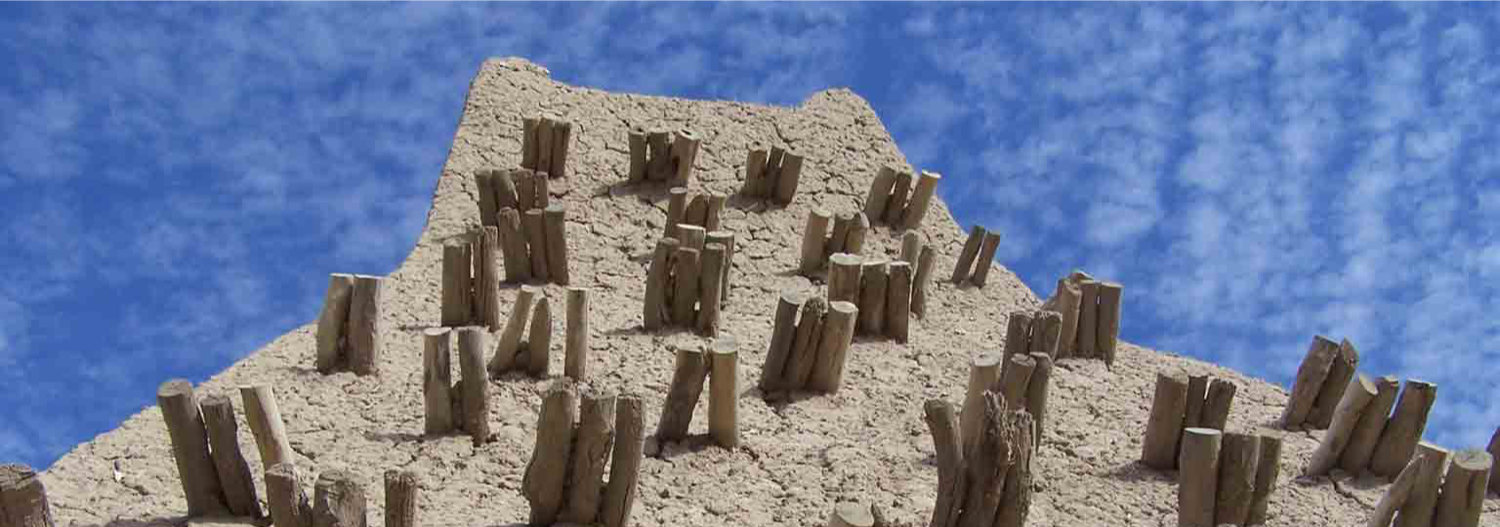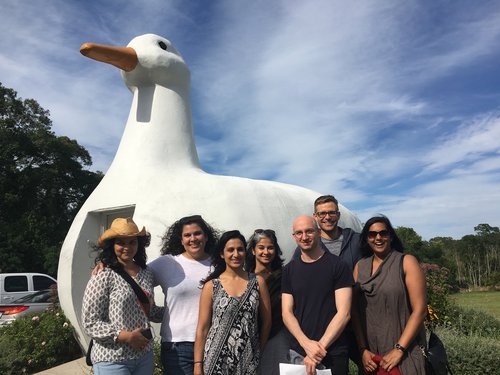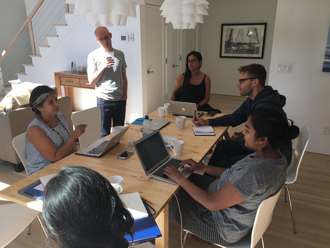
Workshop for Emerging/Junior Scholars
About
This Teacher-to-Teacher Workshop is intended to help emerging/junior scholars tackle the rigors of teaching global architectural history at the survey level. The workshop will address two key challenges in this endeavor: first, finding creative and interesting ways to engage the global in architecture, and second, how to conceptualize and make relevant architecture from global regions historically marginalized in the dominant, Euro-centric disciplinary narrative.
The workshop will make use of GAHTC’s extensive library of survey lectures and also introduce participants to the GAHTC as a source of mentorship for teaching architectural history from a global perspective.
It aims to offer proactive solutions for developing courses that engage the full breadth and depth of global architectural knowledge. Participants will learn methods for incorporating new research on global architecture into survey courses in ways that go beyond simply presenting the architecture of non-western regions or global vernaculars. Instead, they will engage with the global as an interdisciplinary conversation combining the arts, history, anthropology, geography, and material culture.
The workshop met on August 22-25, 2017, in East Hampton, NY.
Workshop Memo

In keeping with the theme of this workshop, which is to critically assess the established definition of the global, we asked each participant to submit a work or a work in progress that would contribute to a broader understanding of current debates around the global. A participant’s contribution could take the form of a course syllabus, book proposal, conference abstract, film, work of art, etc. There is no limit or boundary to the scope of the contribution, we only asked that it challenge workshop participants to re-conceptualize their work as part of the current debate.
What is the established Global, and what is the new Global? As you know, in the beginning architectural history was a Euro-centric discipline, which treated the architecture of the non-West as a separate category, as “vernacular.” When pushed to ‘globalize,’ architectural survey courses simply amped up the volume on the vernacularized regions. We are looking for a new Global approach. Our conceptualization of the global is not simply that of the architectural object, and it is not simply that which is not western. Such a conceptualization too easily defaults us into categories of non-west and vernacular. Rather we would like to engage in interdisciplinary debates, that consider histories beyond the architectural object, and that find a way to de-emphasize regions and emphasize instead connections.
This is not to say that we didn’t want you to talk about buildings. We merely wanted to open up the conversation to different media and disciplines, and see how this might help us in our teaching and scholarship.
We did not want participants to create something new—unless they wanted to. We just wanted them to submit something that helped them to move forward in their thinking and their work, so that these few days in this workshop can both be engaging, fun, and beneficial to everyone.
Remittance to GAHTC Library
The three-day workshop was spent in combination of activities, alternating between reviewing and critiquing participant submissions, which ranged from book proposals to course syllabi, to enjoying neighboring architectural sights, such as “The Big Duck”.
Throughout, we engaged in questions and debates about the meaning of “Global”, curricular practices, NAAB Requirements, as well as the GAHTC and its mission on teaching and collaboration. We asked questions such as What does the word “global” mean? Why not use “world” or “planetary” history? And troubled over what happens to theory and criticism, in the teaching of global history. We considered the relationship between the term global and the history and theory of globalization, arriving at the ultimate question the intellectual longevity of our collaboration, particularly beyond the pressing contemporary questions/the question at hand?
As a group, we settled on three submissions that we felt would be timely and engaging to the GAHTC community. The first is a

memo that considers objectives and challenges of Global Architectural History, not only teasing apart the various meanings of global, but went further to develop the memo into a call for papers to a special edition, edited journal volume.
We also developed a second memo, sharing our thought on Teaching and Collaboration. As perspectives of history broaden in the twenty-first century, and approaches from World History to Global History to Big History and to Planetary History abound, it becomes incumbent upon architectural historians working under the rubric of Global History to be able to situate their framework with respect to other approaches, both for the benefit of their research and the clarity of their stance in the classroom.
We noted that during phase one of GAHTC, we saw some innovative collaborations emerge, such as the “expanded classroom model” practiced by members of the FAAC (Feminist Art and Architecture Collaborative) in which a network of professors share the classroom space between their various institutions. As we move into GAHTC 2.0 we ask, can we think about ways in which such collaborations can be further advanced such that the collaboration itself becomes central to the mission of the GAHTC, rather than being only a by-product of the project, occurring at the margins? What would other models of collaborative teaching look like, especially in terms of global collaboration? How do we make diverse voices and perspectives on architectural history visible and legible to each other and to our students?
Participants also submitted individual narratives, outlining their submission, the type of critique they received from fellow participants, and how it has impacted the development of their projects.
Workshop Participants

Eliana HM. Azra D. Joseph B. Joseph G. Mrinalini R. Saima A. Ateya K.


